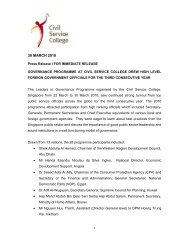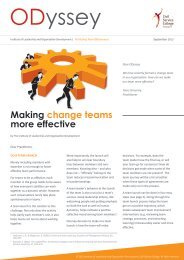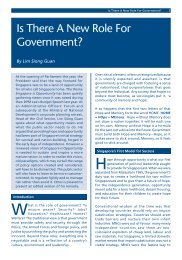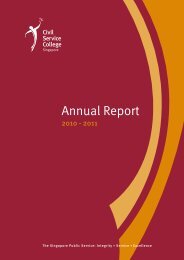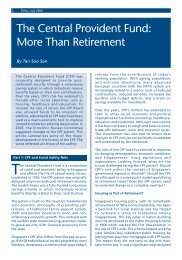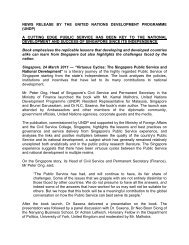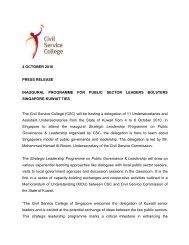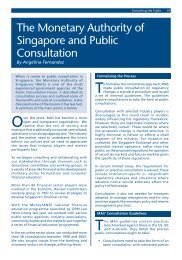Public Consultation Toolkit - Civil Service College
Public Consultation Toolkit - Civil Service College
Public Consultation Toolkit - Civil Service College
Create successful ePaper yourself
Turn your PDF publications into a flip-book with our unique Google optimized e-Paper software.
<strong>Public</strong> <strong>Consultation</strong> <strong>Toolkit</strong> 47 48 <strong>Public</strong> <strong>Consultation</strong> <strong>Toolkit</strong><br />
The three stages of closing the loop and a suggested timeline are shown in the table below<br />
(Table 7-1):<br />
There are three stages in closing the loop which should be followed:-<br />
Stage What to incorporate Purpose Timeline<br />
3. <strong>Public</strong>ation<br />
Announce published report to other interested<br />
stakeholders or the general public.<br />
Acknowledgement • Recognition for<br />
feedback provided<br />
• Expected timeline<br />
for processing<br />
feedback<br />
• To demonstrate<br />
that the agency<br />
recognises and<br />
appreciates the<br />
contributions<br />
Within one working<br />
day<br />
2. Explanation<br />
Develop a report of participants’ feedback and<br />
the respective response by the agency. Share<br />
the report with the participants.<br />
Explanation • Details of<br />
consultation (date,<br />
duration, purpose)<br />
• Feedback provided<br />
by participants/<br />
stakeholders<br />
• Approach for<br />
considering<br />
feedback<br />
• Reasons for<br />
incorporating/<br />
not incorporating<br />
feedback<br />
• Outcome of<br />
consultation<br />
Note: Reports can<br />
be customised for<br />
different stakeholder<br />
groups, depending on<br />
the extent and nature<br />
of involvement<br />
• To close the loop<br />
with stakeholders<br />
who took effort<br />
and time to<br />
provide feedback<br />
• To explain to<br />
these participants<br />
how the feedback<br />
was processed,<br />
and reasons for<br />
incorporating/not<br />
incorporating the<br />
feedback<br />
• To provide<br />
assurance that<br />
the policy or<br />
initiative was<br />
developed with<br />
input from these<br />
stakeholders<br />
Varies depending<br />
on complexity of<br />
issue and agency’s<br />
decision making<br />
timeline<br />
1. Acknowledgement<br />
Generic, automated response to acknowledge<br />
individual feedback received.<br />
<strong>Public</strong>ation • Details of<br />
consultation<br />
• Summary of<br />
feedback provided<br />
• Outcome of<br />
consultation<br />
• To increase<br />
the public’s<br />
awareness of the<br />
initiative, and<br />
inform them<br />
about the issues<br />
and concerns<br />
raised, and<br />
how they were<br />
addressed<br />
Varies depending<br />
on complexity of<br />
issue and agency’s<br />
implementation<br />
timeline<br />
Table 7-1: Three stages of closing the loop



